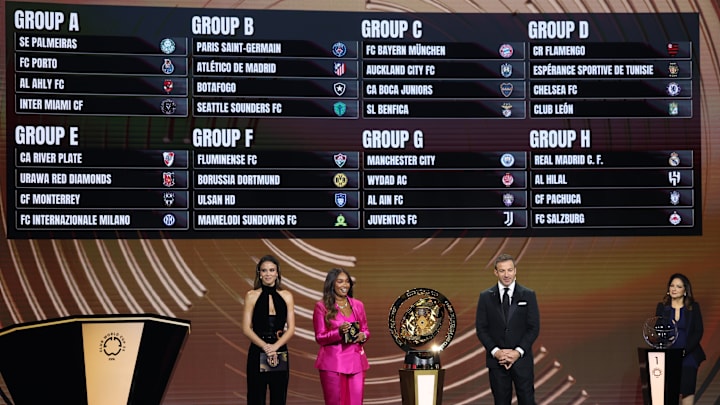The FIFA Club World Cup 2025 is set to redefine international club football with its groundbreaking expanded format, bringing together 32 of the world's elite teams in a month-long spectacle across the United States. This comprehensive analysis delves into the tournament's structure, participating teams, fixture highlights, and the broader implications for the global football calendar.
Tournament Format and Qualification
The 2025 edition marks a significant departure from previous Club World Cups, mirroring the FIFA World Cup structure used from 1998 to 2022. The expanded format will feature:
- 32 teams divided into eight groups of four
- A round-robin group stage
- Knockout stages for the top two teams from each group
Qualification pathways include:
- Continental competition winners (e.g., UEFA Champions League, Copa Libertadores)
- High-performing clubs based on international rankings
- Host nation representation
Notable qualified teams include Real Madrid, Chelsea, Manchester City (UEFA), Seattle Sounders (CONCACAF), Al-Hilal (AFC), Flamengo, River Plate (CONMEBOL), and Auckland City (OFC).
Fixture Highlights and Venues
The tournament will run from June 15 to July 13, 2025, spanning 11 U.S. cities. Some of the most anticipated group-stage matches include:
Group A:
June 14: Al Ahly vs. Inter Miami at Hard Rock Stadium, Miami
June 23: Inter Miami vs. Palmeiras at Hard Rock Stadium, Miami
Group B:
June 15: Paris Saint-Germain vs. Atletico Madrid at Rose Bowl, Los Angeles
Group C:
June 15: Bayern Munich vs. Auckland City at TQL Stadium, Cincinnati
June 20: Bayern Munich vs. Boca Juniors at Hard Rock Stadium, Miami
These fixtures promise exciting clashes between European giants, South American powerhouses, and emerging forces from other continents, setting the stage for a truly global competition. (For a full detailed match schedule, please click here)
Full Groups Line-Up
Group A: Palmeiras (Brazil), Porto (Portugal), Al Ahly (Egypt), Inter Miami (America)
Group B: Paris Saint-Germain (France), Atletico Madrid (Spain), Botafogo (Brazil), Seattle Sounders (America)
Group C: Bayern Munich (Germany), Auckland City (New Zealand), Boca Juniors (Argentina), Benfica (Portugal)
Group D: Flamengo (Brazil), ES Tunis (Tunisia), Chelsea (England), Club Leon (Mexico)
Group E: River Plate (Argentina), Urawa Red Diamonds (Japan), CF Monterrey (Mexico), Inter Milan (Italy)
Group F: Fluminense (Brazil), Borussia Dortmund (Germany), Ulsan HD (South Korea), Mamelodi Sundowns (South Africa)
Group G: Manchester City (England), Wydad AC (Morocco), Al Ahin FC (UAE), Juventus (Italy)
Group H: Real Madrid (Spain), Al Hilal (Saudi Arabia), CF Pachuca (Mexico), RB Salzburg (Austria)
Implications and Challenges
Fixture Congestion and Player Welfare
The expanded format raises concerns about fixture congestion and its impact on player health. Research indicates that congested schedules increase the risk of match injuries, potentially affecting team performance in both the Club World Cup and domestic competitions. Clubs will need to carefully manage squad rotation and player workload to maintain performance levels across all competitions.
Tactical and Performance Considerations
Fixture congestion has been shown to negatively impact tactical performance, with decreased synchronization between players. Teams participating in the Club World Cup may face challenges in maintaining their tactical cohesion, especially when balancing the tournament with ongoing domestic league commitments.
Global Football Calendar
The introduction of this expanded Club World Cup format is likely to have significant repercussions on the global football calendar. Potential conflicts with domestic leagues, continental competitions, and international tournaments may force teams and players to make difficult choices about prioritization.
Reactions and Expectations
While official statements from FIFA and team representatives regarding the 2025 Club World Cup are limited in the provided research, the expanded format has generated considerable discussion within the football community. The tournament's ambitious scale and the inclusion of top clubs from around the world have raised expectations for a highly competitive and globally representative event.

Conclusion
The FIFA Club World Cup 2025 represents a bold step in the evolution of international club football. Its expanded format, featuring 32 teams from across the globe, promises to deliver unprecedented levels of competition and excitement. However, the tournament also presents significant challenges in terms of fixture congestion, player welfare, and the broader football calendar.
As the football world prepares for this landmark event, clubs, players, and fans alike will be watching closely to see how this new format unfolds and what it means for the future of the sport. The success of the 2025 Club World Cup could set the stage for a new era in global club competition, potentially reshaping the landscape of international football for years to come.
